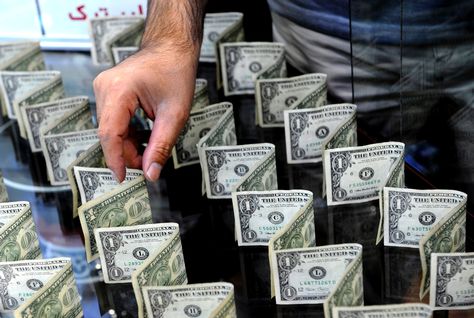
The U.S. dollar may be cyclically weak right now, but it remains the main vehicle for foreign exchange transactions, the leading international invoice currency and the most important medium for official reserves and interventions to influence exchange rates. In addition, it provides an anchor for many countries outside Europe to peg their currencies to, and for some countries like Panama, the dollar even serves as the official currency.
In short, the dollar rules, to the great benefit of the U.S. Could it lose its dominion? It could. Flabby monetary policy could bring on nasty inflation, a collapse in Treasury bond prices and the dollar and a lot of economic hardship.
Two worrisome signs are a flight of private money from the dollar and negative real interest rates. Private investors are starting to move their money to China and other countries with currencies they expect to appreciate. As a result China’s foreign exchange reserves have increased rapidly while its trade surplus has begun to shrink. For real rates, compare the nominal return on short-term Treasury bills (less than 1.5%) with the rise in the consumer price index over the last year (5%). Someone sitting on cash in the form of T bills is seeing his wealth shrink (and this is before income tax is subtracted). Neither U.S. savers nor foreign central banks are willing to undertake this sacrifice forever.
Asian countries and the Gulf states are sitting on huge piles of dollars from being net exporters, and their central banks have been gathering up those dollars to maintain their link to the greenback and to keep their own money from appreciating too fast against it. They invest most of those reserves in U.S. government bonds. Foreign central banks purchase roughly 80% of all the new debt issued by the U.S. government.
The Fed’s loose monetary policy and the resulting flight from the dollar have therefore paradoxically strengthened America’s credit standing, as the greenback’s weakness has induced foreign central banks to buy unwanted dollars and use them to purchase U.S. government bonds. This has drained new Treasurys from the market. Meanwhile, with the collapse of the housing bubble and the implosion of some hedge funds and special investment vehicles, private paper has gotten harder to use as collateral, so there has been a domestic flight to quality and Treasurys. All of which is why the prices of Treasurys remain elevated and their yields low.
It’s not certain that the dollar will deteriorate further and interest rates will rise, but it’s a risk you should hedge against.
The same weakness in the dollar has also pushed commodity prices up well beyond where they would otherwise be. By my calculation, approximately half the price increase in crude oil since 2003 and 55% of the increase in corn since 2001 can be accounted for by the dollar’s decline. Federal Reserve Chairman Ben S. Bernanke doesn’t concede this point. In Capitol Hill testimony on July 15, he declared that the weak dollar contributed in only a small way to the spike in oil prices. He is not, however, a disinterested witness.
In a speech on June 26 Fed Vice Chairman Donald Kohn also attempted to get the dollar off the hook for commodity inflation. He blamed foreign countries that link their currencies to the dollar and therefore import too-loose monetary policies from the U.S. He didn’t name the offenders, but China, other Asian countries and the Gulf states must have been on his mind. Kohn’s conclusion: “Economies benefit from having independent monetary policies that provide room to respond flexibly to alternative configurations of economic and financial shocks. These benefits could be increased if exchange-rate flexibility were to become more widespread and monetary policies given greater latitude to respond to shocks wherever they originate.”
By denying a direct link between the dollar and commodity prices, the Fed is signaling that it wants room to move interest rates and the dollar down if the economy sinks into an even deeper hole than it is in now. But by pushing the onus for high commodity prices onto countries that link their currencies to the dollar, the Fed is playing a dangerous game. If those countries abandon their links to our money, they will have much less reason to purchase dollar reserves and U.S. Treasurys. The dollar and U.S. government bonds will tumble, unleashing higher inflation at home and abroad.
It’s not certain that the dollar will deteriorate further and interest rates will rise, but it’s a risk you should hedge against. If you haven’t done so already, sell your nominal (i.e., non-inflation-indexed) U.S. government bonds and use the proceeds to add to the gold hedges I recommended back in May.
Author Steve H. Hanke

0 responses on "The Fed Plays With Fire"